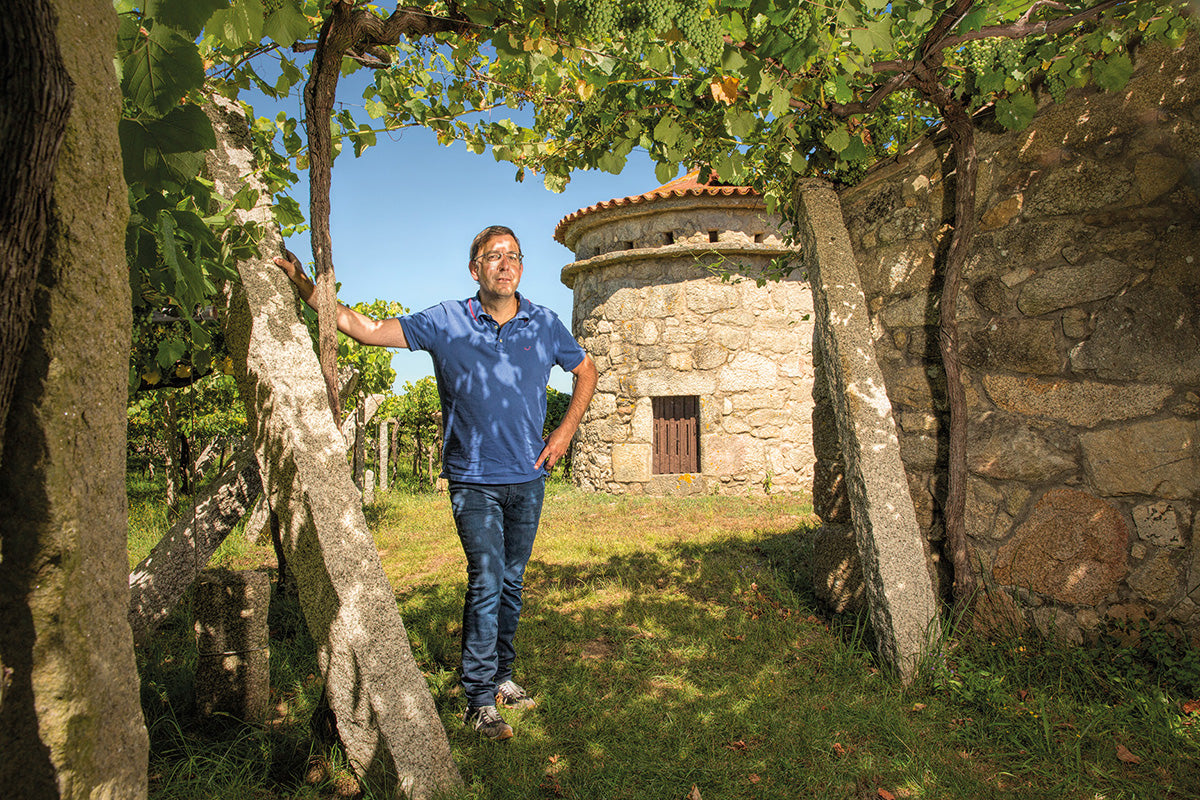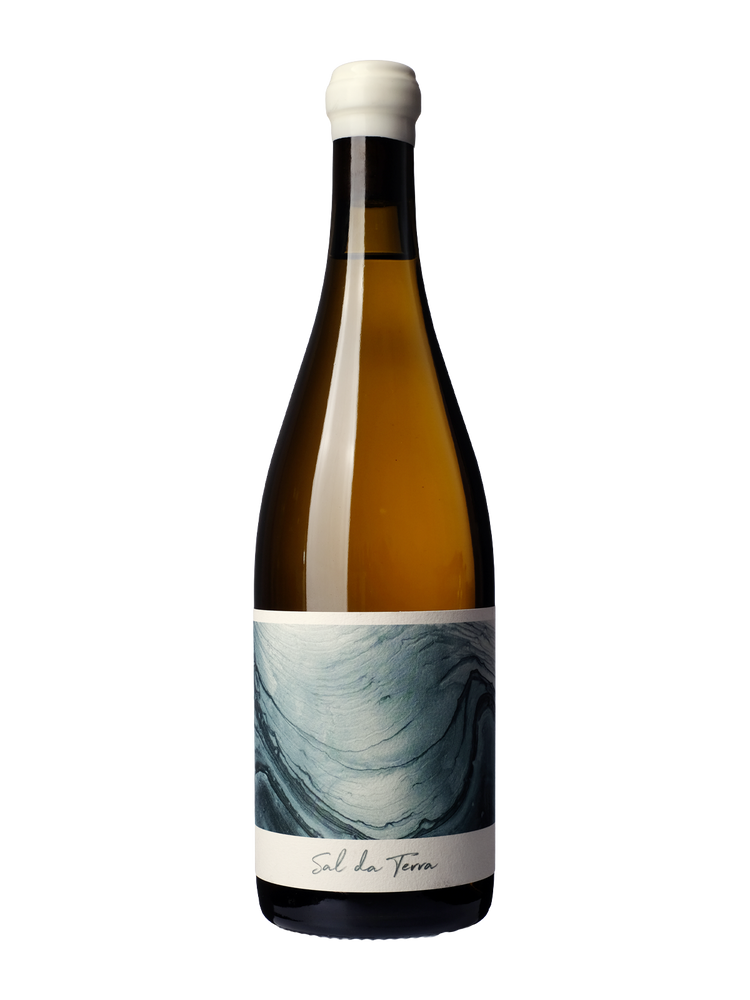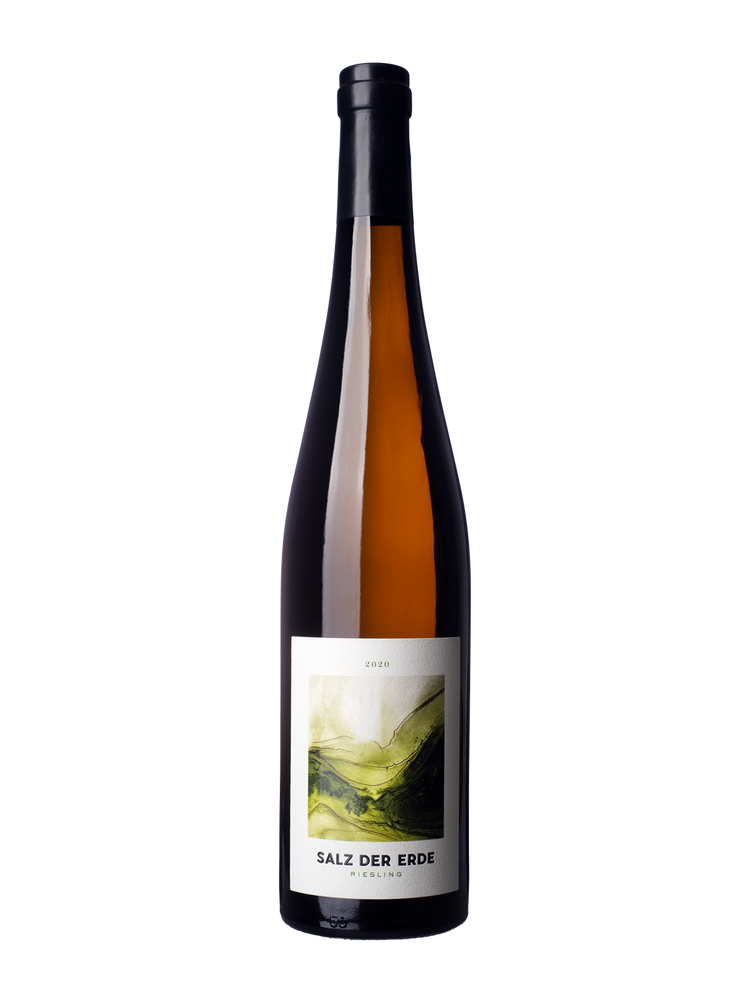‘Sal da Terra’ Albariño was a runaway success from the very first vintage, released 4 years ago. A collaboration of three friends, and the legendary winemaker Eulogio Pomares, this is a wine that epitomises 'terroir' and salinity in a wine. This week, the long awaited 2020 vintage was released, and Jamie Goode talks us through the project, how this next blend came to be, plus the exciting new addiiton of ‘Salz der Erde' Riesling by Theresa Breuer.
‘Sal da Terra’ is now three vintages in since its debut in 2018! A quick re-cap: back in 2018 Ben Henshaw came to Daniel Primack (of Winerackd, who among other things import Zalto glasses into the UK) and me with the suggestion that we might make a wine together. What about an Albariño from Rias Baixas?
The obvious choice would be to work with Eulogio Pomares of Zarate, who also makes the Carralcoba wines under his own label. For all of us, Eulogio’s ‘Carralcoba’ was the reference point for truly great Albariño. He agreed to the project, and we went out to scout vineyards with him. He chose two, and we decided to vinify them in different ways.

The first, we chose to vinify in the 1200 litre chestnut barrels that he uses for Carralcoba. And for the second, we wanted to use concrete, which he hadn’t used before, so he bought a 1500 litre concrete tank. We made the blend, and shortly after ‘Sal da Terra’ was launched, with a label designed by Mariëtte Kotzé in South Africa. The following two vintages, 2019 and 2020 were blended remotely, with samples sent over, and Eulogio on the phone. And we are really pleased with how they have turned out.
‘There is a real difference between 2019 and 2020,’ says Eulogio, talking of the vintages. ‘2019 was warm during August and the grapes got very ripe, and ripened fast. We had to advance the date of the harvest to the first week of September, and we did a quick harvest. The sugar was rising fast. For me, this is a warm vintage.’
‘2020 is a vintage where it was rainy and cold during flowering, and we lost maybe 40% of the flowers; it is a low yield vintage. It was also rainy and cool in August, but September was really nice. I think the acidity in 2020 is wonderful. The Albariño’s made in 2020 are wines that will live longer in bottle than the 2019s. You can drink 2020 now, but you can also keep it.’
How does he find the difference working in chestnut and concrete? ‘In chestnut the ageing of the wine is faster, and in concrete it is blocked. So now if you taste 2021 in chestnut the wine is finished, and you can drink it, but in concrete it is totally different. It is like a wine at the end of the fermentation, so I think that the concrete is something that slows the ageing of the wine. It is interesting to give more time in concrete and less time in chestnut.’
The chestnut barrels that Eulogio uses are made differently to oak barrels. ‘In chestnut, the traditional way is to boil the staves to give the form to the barrel. It’s never with fire. If you toast the chestnut, it doesn’t give a nice flavour to the wine.’ There are two ways that chestnut barrels are made these days. As well as this old method of boiling the staves, there’s a more modern method where steam is used. ‘With the traditional method you extract more flavour from the chestnut. I prefer this old technique because the nose of the wine is better.’ These traditionally made chestnut barrels are more neutral. His tonnellerie (barrel maker) is based in Barcelona, and they use chestnut from both Galicia and around Barcelona. These are 1200 litre in capacity and half the price of oak.

The great news is that Eulogio thinks that in 2021 he will be making a bit more ‘Sal da Terra’. The 3 hectare vineyard in Castrelo, close to the ocean, which is one of the two used for Sal da Terra, is now rented in its entirety by Eulogio from the 2021 vintage, meaning more grapes. He’s thinking of getting a 3000-litre chestnut barrel. He says that in Ribera Sacra they also have chestnut from Asturias (a mountainous are in northwest Spain), and that chestnut is also used in the north for cider production. It is becoming much more commonplace.
The big news is that this year, ‘Sal da Terra’ has been joined by a younger sibling, ‘Salz der Erde’; a Riesling. This is a collaborative wine made by Theresa Breuer, of Weingut Georg Breuer in the Rheingau region of Germany. The debut vintage, 2020, makes use of two vineyards that Theresa recently purchased in a village called ‘Lorch’, down river from their base in Rudesheim, where the valley gets narrower and the vineyards steeper.

Like ‘Sal de Terra’, it is a blend of two vineyards. 60% comes from an elevated site in ‘Kapellenberg’, vinified in stainless steel. This vineyard has more quartzite in the soils, which results in mineral, stony flavours, and a bit salinity. 40% comes from ‘Krone’, a warmer site with more slatey soils, vinified in large old oak. Both sets of grapes are whole bunch pressed and then bottled after 10 months on lees. The result is a pure, mineral, dry expression of Riesling. We blended it quite a while ago, so it was great to recently be able to try the finished wine, which we are really happy with.


